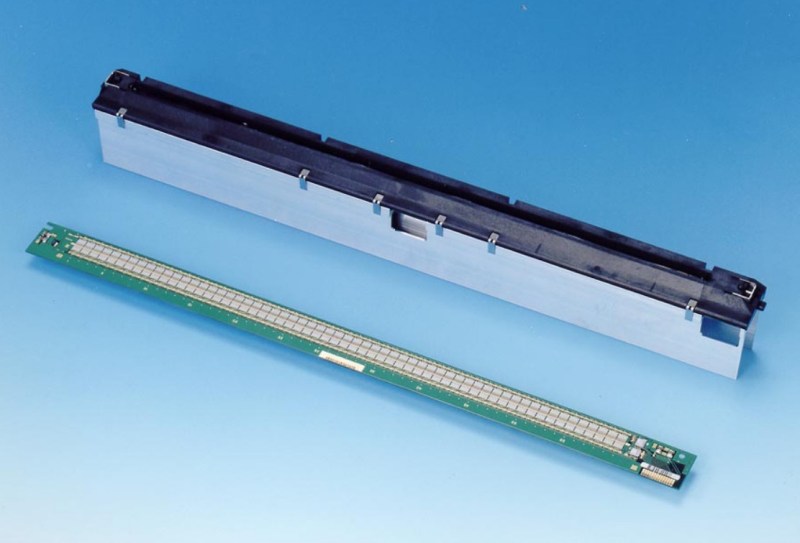Strings of LEDs are a staple of the type of project we see here at Hackaday, with addressable devices such as the WS2812 in particular having changed beyond recognition what is possible on a reasonable budget. They’ve appeared in all kinds of projects, but are perhaps most memorable when used in imaging projects such as screen-like arrays or persistence-of-vision systems. There’s another addressable LED product that we haven’t seen here, which is quite a surprise considering that it can be found with relative ease in junk piles and has been on the market for decades. We’re talking about the LED printer, and the addressable LED product in question is a very high density array of LEDs the width of a page, designed to place an image of the page to be printed on the toner transfer drum.
Inkjets, Lasers, And Now LEDs? How’s That Work Then?

LED printers share their basic operation with photocopiers and laser printers, in that they use an electrostatic process to create the image on paper. A photosensitive drum is electrostatically charged before being exposed to brightly lit image of the page to be printed. The electrostatic charge is dissipated where the strong light hits the drum, but remains where there is no light. As the drum passes through a powdered toner it picks up the powder wherever it is charged, resulting in a copy of the page in toner on its surface.
The toner is then transferred to a piece of paper and heated such that it sets into the paper to produce a permanent print. On a photocopier, a lens and a bright light project the document, while on a laser printer the drum is charged by painting the laser dot line by line with a spinning mirror. The LED printer meanwhile exposes it one line at a time by shining light from a very long row of LEDs, and offers the advantage of lower cost and complexity than a laser printer with traditionally a slightly lower quality print. For this last reason it’s the laser that has captured the public imagination instead of its cheaper cousin, and though LED printers have remained available since they first appeared in the 1980s they remain something of a poor relation and their marketing often fails to mention LEDs at all.
Depending on the manufacturer the LEDs can be a variety of wavelengths, with the most common ones being either near-infra-red, or visible red. The LED arrays usually contain all their driver chips and are driven serially, leading to the possibility that they could be adapted for other purposes.
Getting Your Hands On All Those Lovely LEDs
It’s easy enough to find an LED printer array by dismantling a scrap printer, but a surprise is that they seem impossible to find as components in their own right. This is almost certainly because they are manufactured as parts for a particular printer mechanism rather than as parts in their own right, so unless you happen to be the manufacturer of that mechanism then there is little demand for them. Having salvaged one and been lucky enough to find that it has a visible wavelength though, how might you use it? An obvious application would be in very high resolution POV displays. They offer hundreds or even thousands of dots per inch, a resolution that a string of Neopixels can’t even come close to matching. Or how about using them for light painting, in this even an IR array could be pressed into service given a camera with sensitivity in that range.
So come on then, Neopixels are getting stale and we’ve seen almost every conceivable application for them before. Show us an LED project we haven’t seen before, one with breathtaking resolution! Our tips line is open, as always. To get you started we’ve put a video below the break with an intro to LED printers, then there’s OKI’s introduction to the technology, followed by this white paper from them talking about the LED arrays, and finally for a few more pointers take a look at this EEVblog thread.
Header image: OkiUkraine [CC BY-SA 3.0]
No comments:
Post a Comment